Mongan, Deirdre (2011) Non-fatal overdoses and drug-related emergencies. Drugnet Ireland, Issue 39, Autumn 2011, pp. 12-14.
| Preview | Title | Contact |
|---|---|---|
|
PDF (Drugnet Ireland 39)
- Published Version
17MB |
Data extracted from the Hospital In-Patient Enquiry (HIPE) scheme were analysed to determine trends in non-fatal overdoses discharged from Irish hospitals in 2009. There were 4,202 overdose cases in that year, of which 30 died in hospital. The 4,172 discharged cases are included in this analysis. The number of overdose cases decreased by 13% between 2008 and 2009 (Figure 1).
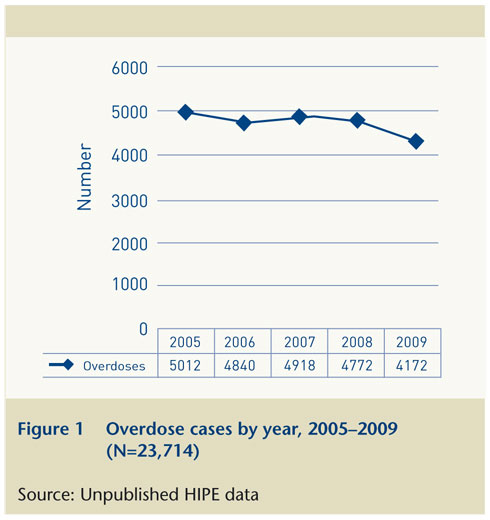

Characteristics of cases
Gender
In the years 2005-2009 there were more overdose cases among females than among males (figure 2), with females accounting for 54% of all overdose cases in 2009.
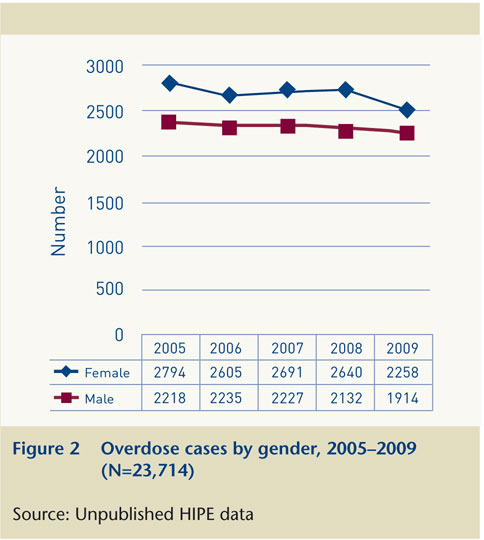
Age group
In the four-year period 2005–2008, one quarter of overdoses occurred in those aged 15–24 years, with the incidence of overdose decreasing with age (Figure 3). The number of under-25s fell in 2009, accounting for 32% (n=1,328) of overdose cases, compared to 40% (n=2,015) in 2005.
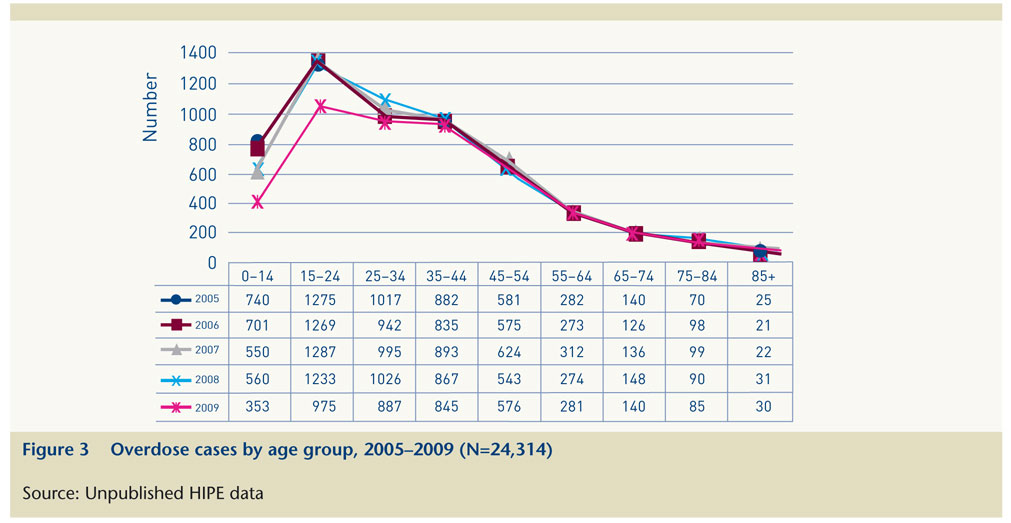
Drugs involved
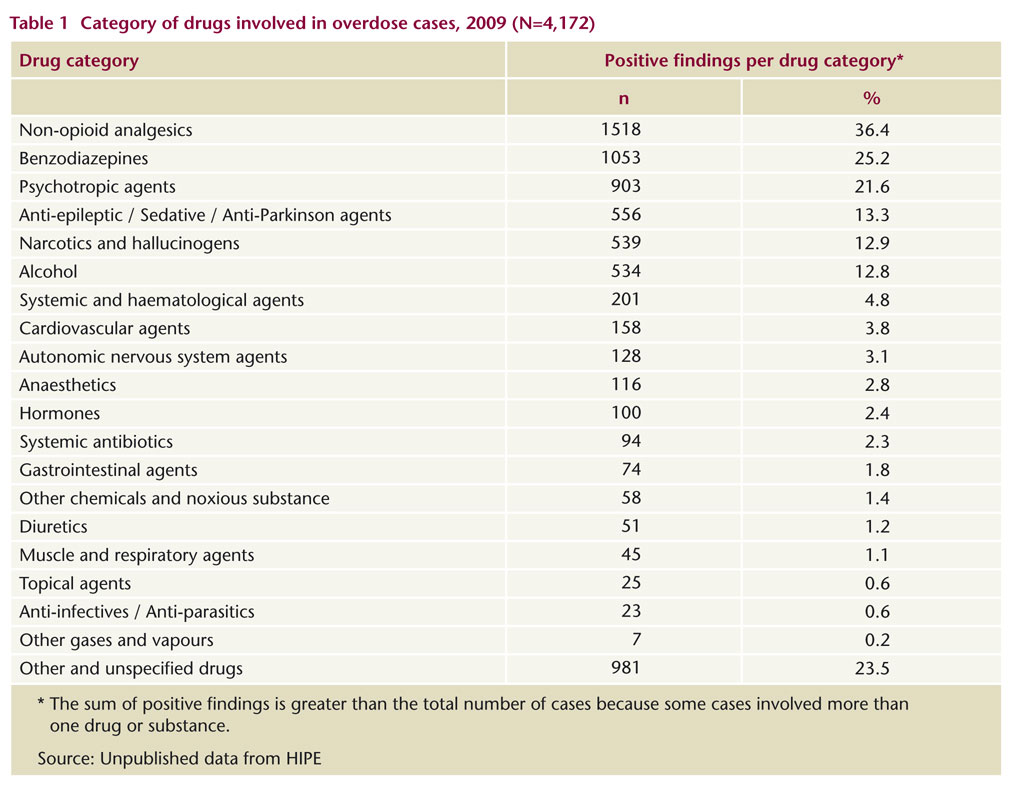
Overdoses involving narcotics or hallucinogens
Narcotic or hallucinogenic drugs were involved in 13% (539) of overdose cases in 2009. Figure 4 shows the number of positive findings of drugs in this category among the 539 cases. The sum of positive findings is greater than the total number of cases because some cases involved more than one drug from this category. Opiates were used in 82% of the cases, cocaine in 17% and cannabis in 9%.
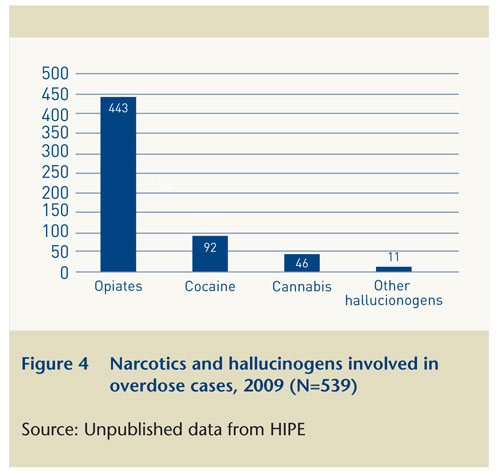
Overdoses classified by intent
In 70.3% of cases the overdose was classified as intentional (Figure 5).
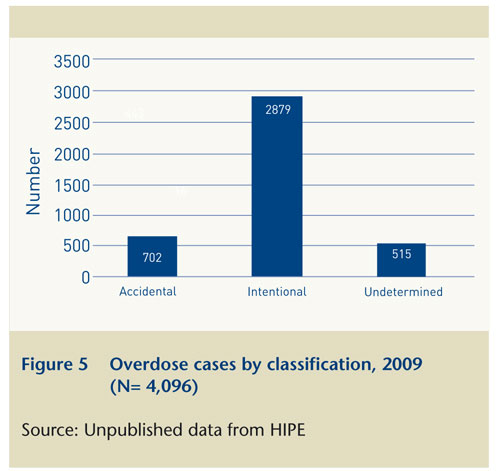
Table 2 presents the positive findings per category of drugs and other substances involved in cases of intentional overdose in 2009. Non-opioid analgesics were involved in 43% (1,236) of cases, benzodiazepines in 28% (816) and psychotropic agents in 25% (728).
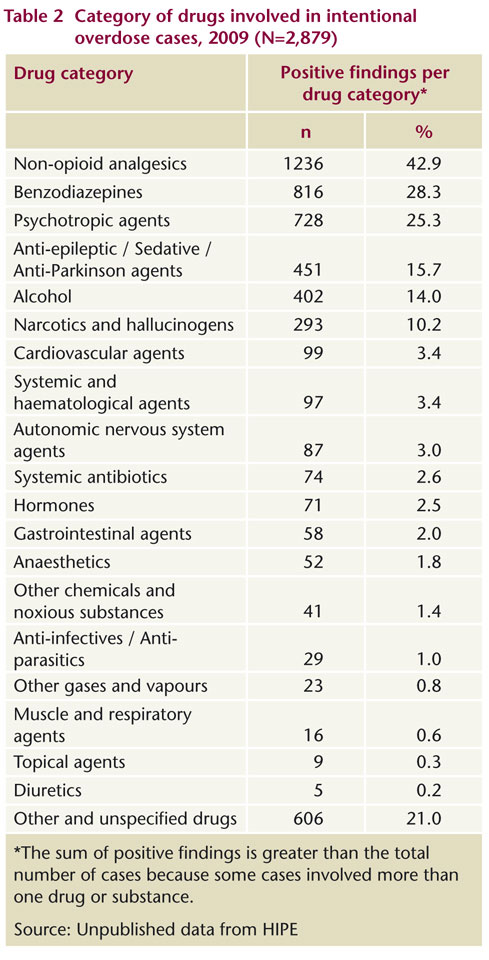
VA Geographic area > Europe > Ireland
P Demography, epidemiology, and history > Population dynamics > Substance related mortality / death
F Concepts in psychology > Behaviour > Self-destructive behaviour / self-harm > Suicidal behaviour / suicide
J Health care, prevention, harm reduction and treatment > Type of care > Emergency care
Repository Staff Only: item control page